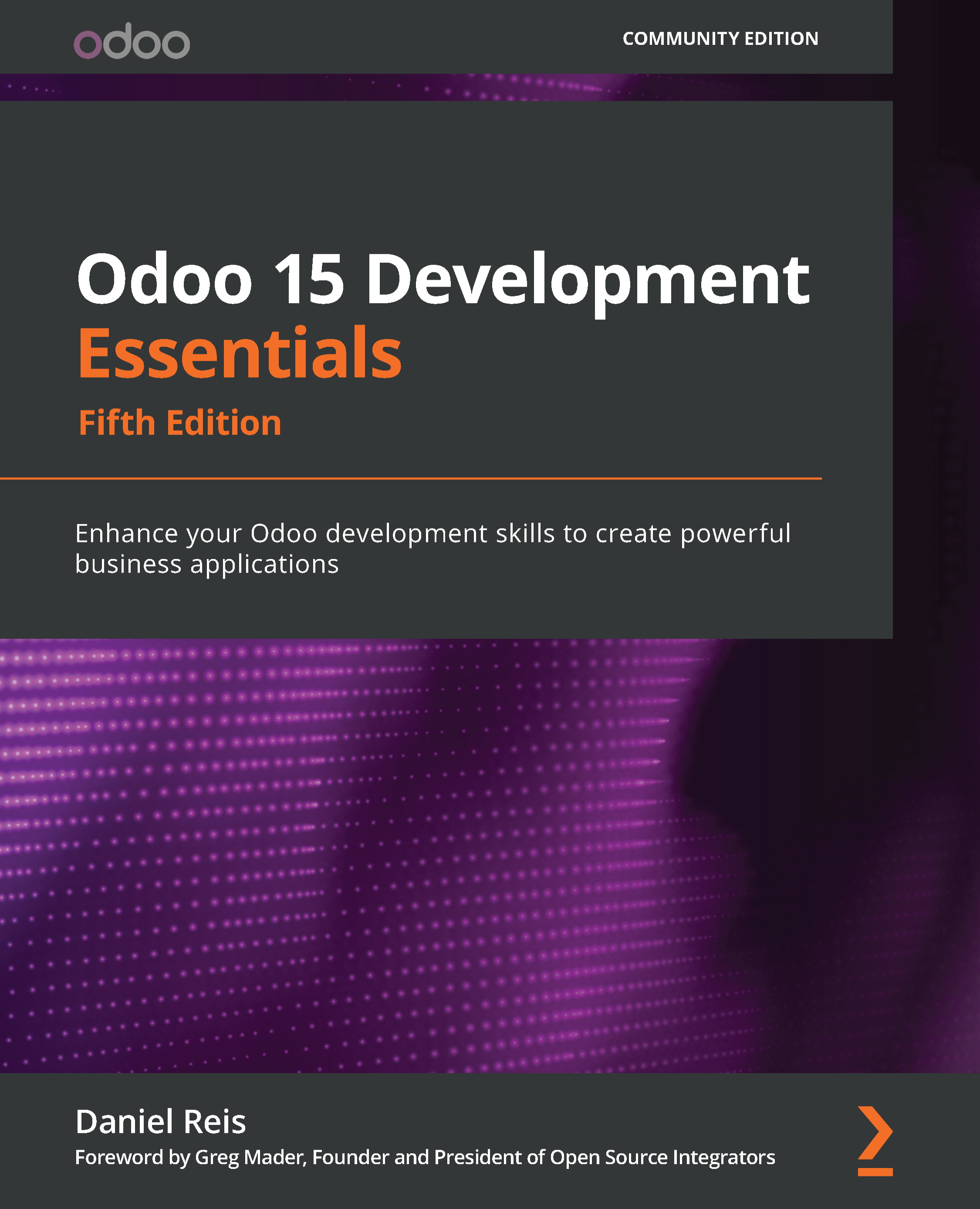Overview of this book
Odoo is fast becoming the reference open source platform for business applications thanks to the fact that it provides the infrastructure needed for developers to deliver software solutions for any business process quickly. Odoo's layered module approach makes it particularly effective for combining and extending features. This updated fifth edition is a tutorial-style introduction to essential Odoo development topics.
The book starts by covering the development essentials for building business applications and takes you through Odoo installation and configuration, gradually transitioning from having no specific knowledge of Odoo to being ready for application development. You'll then learn how to develop your first Odoo application, while covering topics such as models and views. Later chapters will get you up to speed with using server APIs to add business logic, helping you lay a solid foundation for advanced topics. As you progress, you’ll get equipped to build and customize your applications and explore the new features available in Odoo 12 and beyond, such as in-memory ORM and computed writable fields. Finally, you’ll gain insights into building business logic and using the Odoo API to integrate with various applications.
By the end of this book, you’ll be able to build business apps from scratch using the latest version of Odoo.



 Free Chapter
Free Chapter

